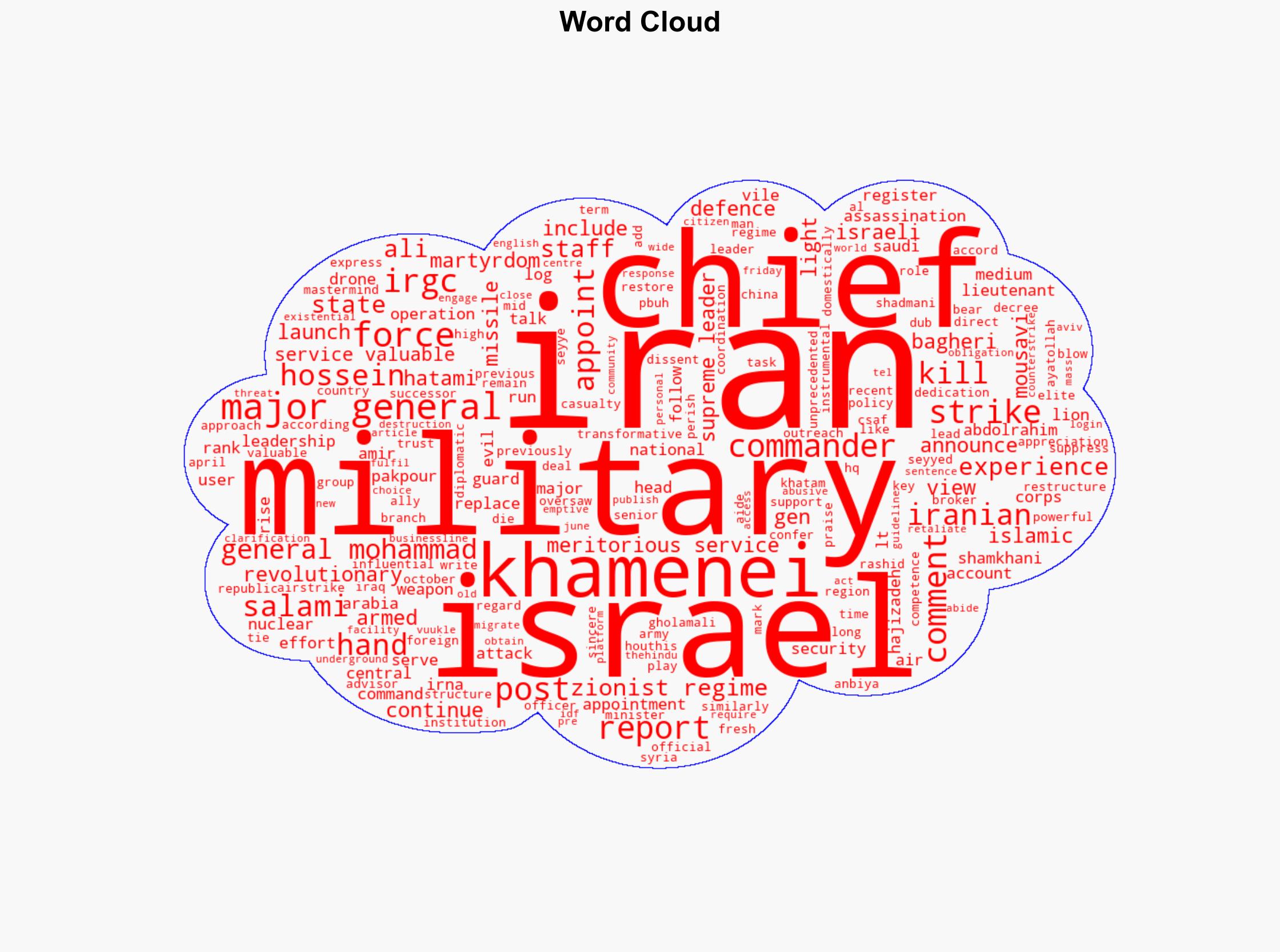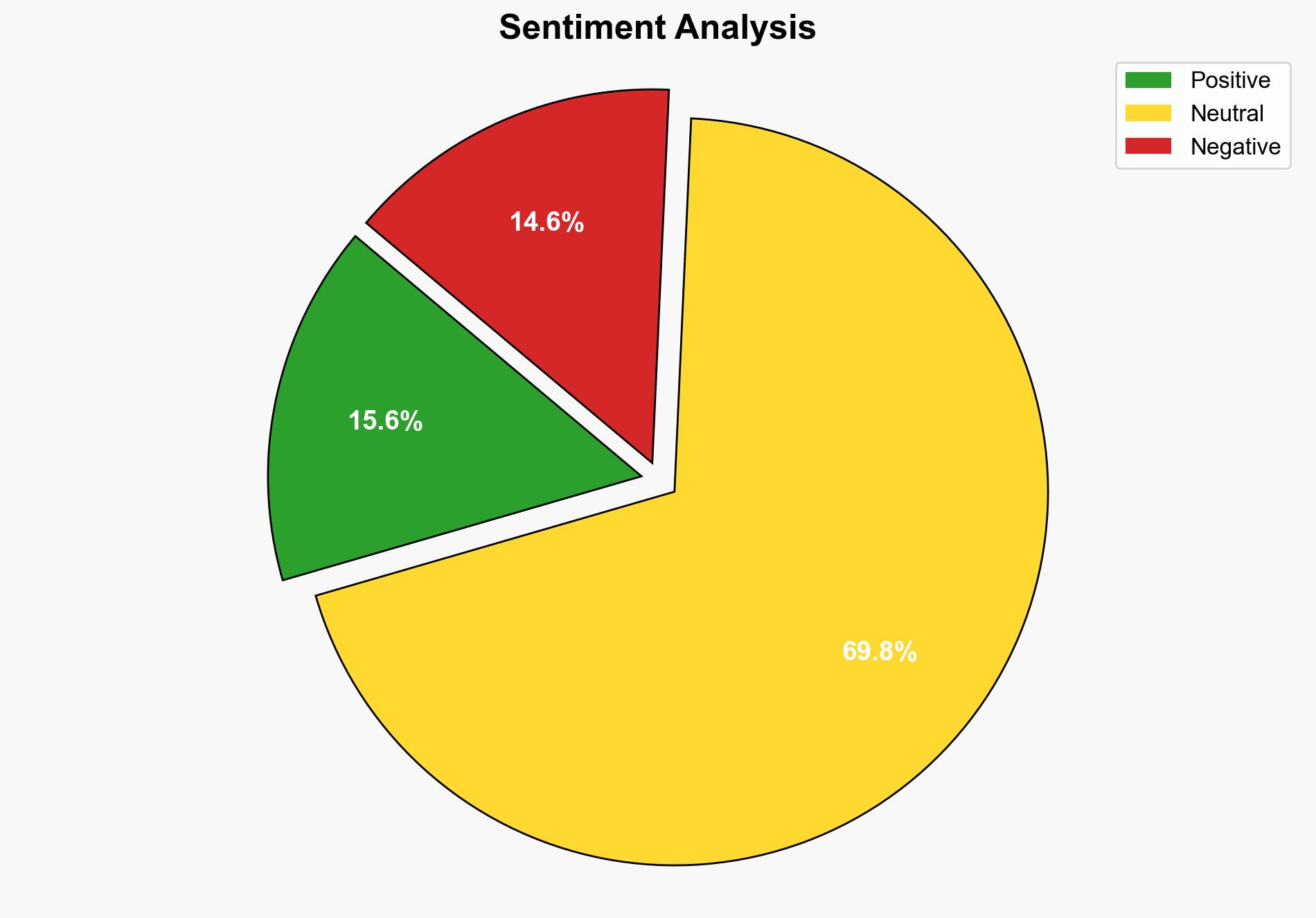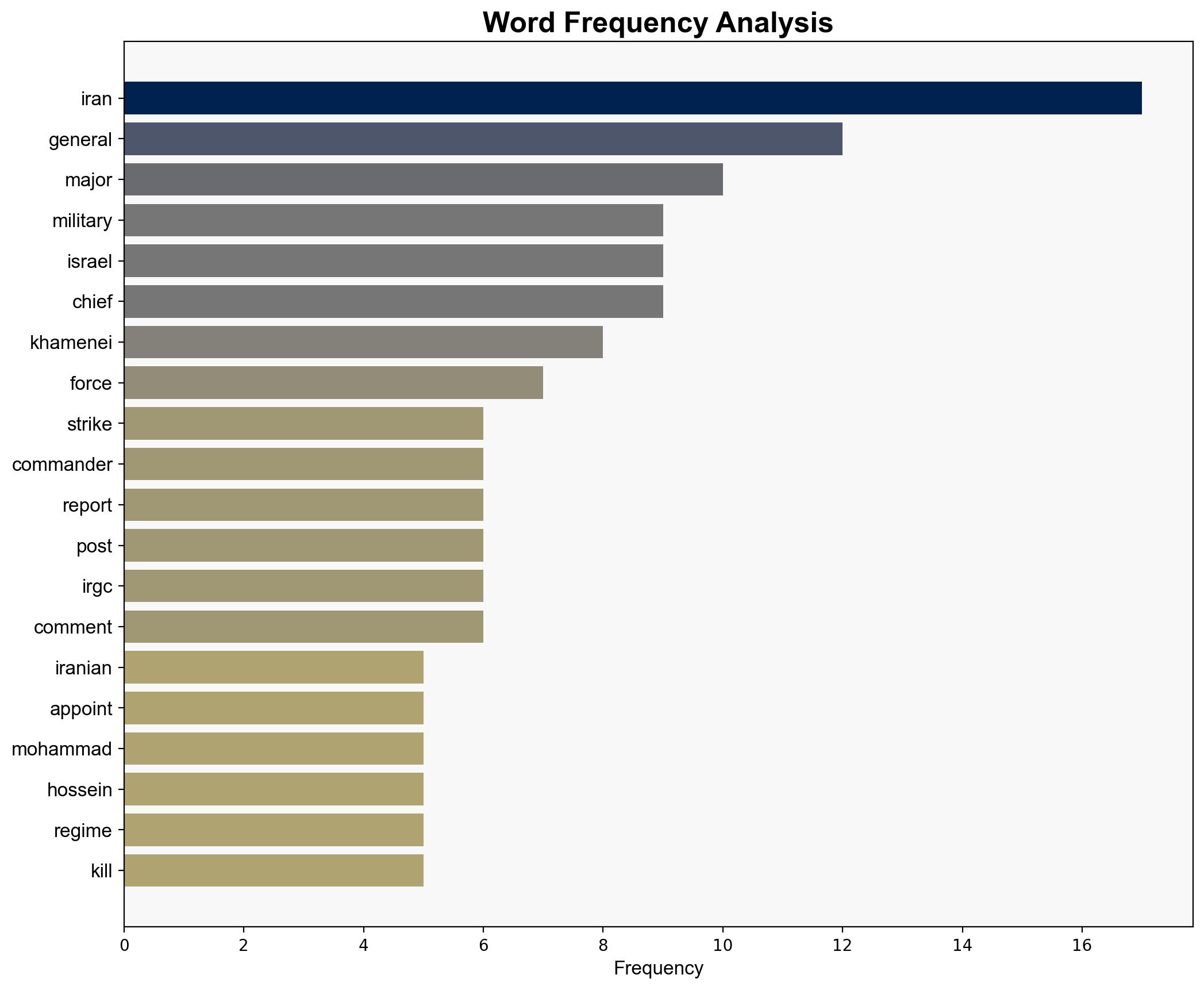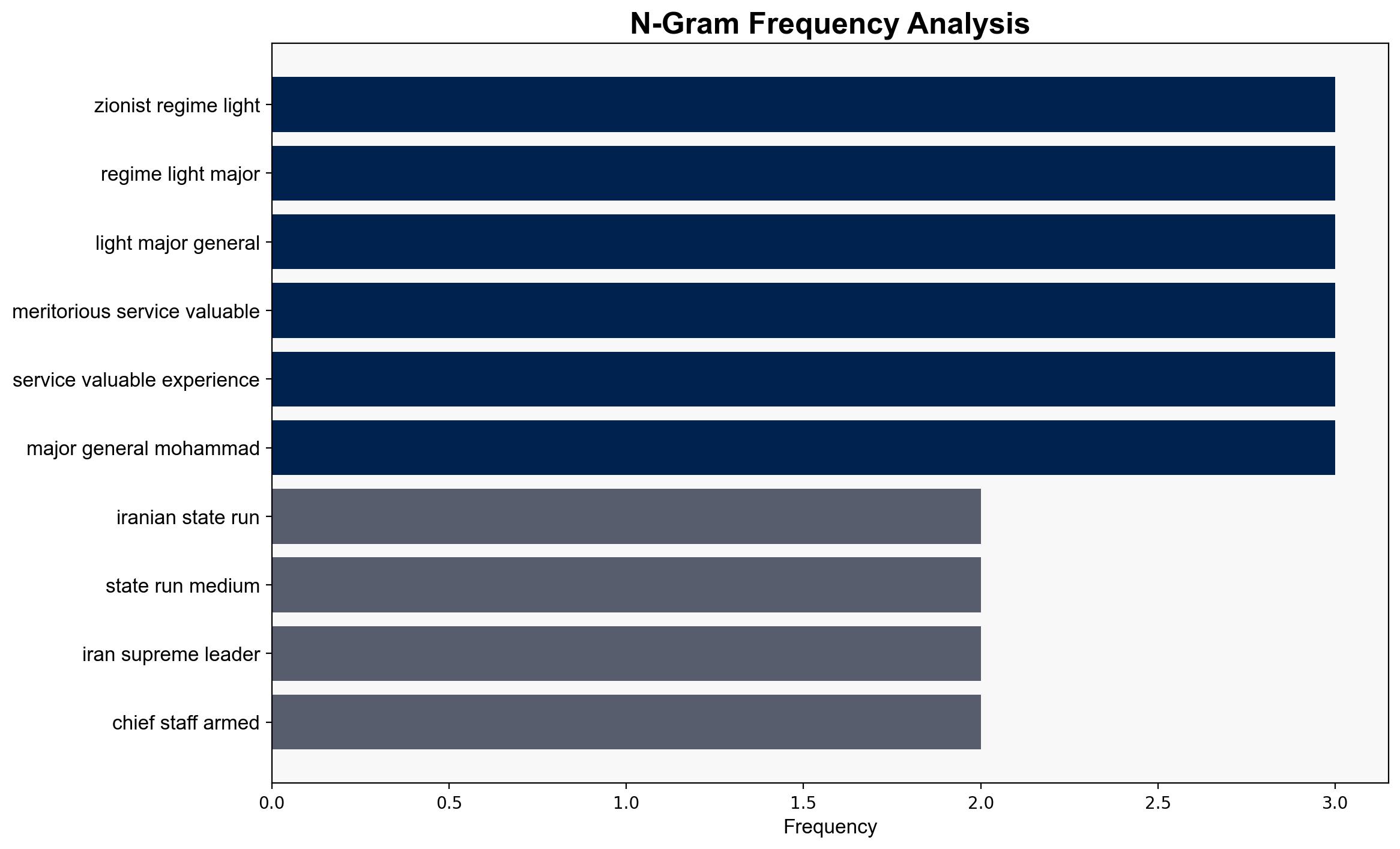Iran gets new military leadership after Israeli strike kills top generals – BusinessLine
Published on: 2025-06-14
Intelligence Report: Iran gets new military leadership after Israeli strike kills top generals – BusinessLine
1. BLUF (Bottom Line Up Front)
Recent Israeli military operations have resulted in the deaths of key Iranian military leaders, prompting a significant restructuring of Iran’s military leadership. The appointments made by Iran’s Supreme Leader indicate a strategic shift in response to these losses. This development could alter regional power dynamics and necessitates close monitoring of Iran’s military and diplomatic maneuvers.
2. Detailed Analysis
The following structured analytic techniques have been applied to ensure methodological consistency:
Causal Layered Analysis (CLA)
At the surface level, the Israeli strike represents a direct confrontation with Iran’s military capabilities. Systemically, this event underscores the ongoing geopolitical tension between Israel and Iran. The worldview reflects a persistent narrative of hostility and strategic rivalry. Mythologically, the martyrdom of Iranian leaders may be leveraged to galvanize domestic and regional support.
Cross-Impact Simulation
The removal of high-ranking Iranian officials could destabilize regional security, affecting neighboring states such as Iraq and Syria. The power vacuum may lead to increased influence of proxy groups and alter economic dependencies, particularly in oil markets.
Scenario Generation
– Best Case: Iran stabilizes its military leadership and engages in diplomatic efforts to de-escalate tensions.
– Worst Case: Escalation leads to broader regional conflict, involving proxy groups and impacting global oil supply.
– Most Likely: Iran strengthens its military posture while pursuing strategic alliances to counterbalance Israeli actions.
3. Implications and Strategic Risks
The assassination of key military figures presents a strategic risk of retaliatory actions by Iran, potentially targeting Israeli interests globally. The restructuring may lead to short-term instability within Iran’s military command, increasing the likelihood of miscalculations. Additionally, the shift in leadership could influence Iran’s cyber capabilities and economic strategies, posing cross-domain risks.
4. Recommendations and Outlook
- Enhance intelligence monitoring of Iran’s military communications and movements to anticipate potential retaliatory actions.
- Engage in diplomatic channels to reduce tensions and prevent escalation in the region.
- Prepare for potential disruptions in global oil markets by diversifying energy sources.
- Scenario-based projections suggest maintaining readiness for both escalation and diplomatic resolution pathways.
5. Key Individuals and Entities
– Ayatollah Seyyed Ali Khamenei
– Major General Amir Hatami
– Major General Abdolrahim Mousavi
– Major General Mohammad Pakpour
– Major General Ali Shadmani
– Mohammad Hossein Bagheri
– Hossein Salami
– Ali Shamkhani
– Amir Ali Hajizadeh
6. Thematic Tags
national security threats, cybersecurity, counter-terrorism, regional focus





